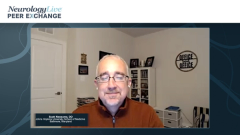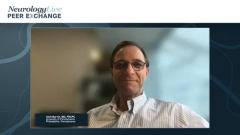
Hidden Symptoms of Multiple Sclerosis
Doctors in neurology comment on the hidden symptoms of multiple sclerosis and debate whether they should be treatment targets.
Episodes in this series

Scott Newsome, DO: We’re coming up on vaccine development. We mentioned earlier that Amit is on the forefront of a lot of this, so maybe Amit or someone else on the panel can relay. Where do you think this is? How far are we from the development of a vaccine that’s going to be somewhat useful to our patients? Amit, you mentioned that if we’re going to have 1 and it’s studied in pediatrics, it’s going to be many years. Tens of thousands of children will need to be exposed. What are your thoughts on that?
Lawrence Steinman, MD: It’s going to be a long road as mentioned. I wanted to get back to 1 other symptom that I’d like to measure. One of the most profound manifestations of infectious mononucleosis is fatigue. One of the most profound manifestations of MS [multiple sclerosis] is fatigue. In COVID-19, 1 of the most profound manifestations is fatigue. We might be trying to go for the highly molecular types of assays, the rigid mention, but fatigue could make a big difference in changing people’s lives for the better. I’m curious, with a small-step approach, would an antiviral change a person’s level of fatigue? The trials won’t take forever. If a vaccine is going to take a decade or so to give us an answer, should we be doing fatigue trials with antivirals soon and look at the outcome?
Scott Newsome, DO: We have 5 clinical sites. We can start with our sites and a trial. It’s an interesting point. When you think about the hidden symptoms of MS—fatigue, cognitive dysfunction, pain—those are the most difficult to treat, and we don’t have a lot of therapies to help with that. Fatigue is 1 of the leading symptoms that lead to disability from the workforce. It takes people out of the workforce. Whether there’s some association with increases in progressive disease, it’s a good point.
We’ve had a tremendous back-and-forth discussion. I’d be interested to hear what further research you feel is needed to establish this link between EBV [Epstein-Barr virus] and MS or other factors, because we didn’t dive into the genetic piece of it. We didn’t dive into other environmental factors because it’s so compelling to me to look at EBV, smoking, and vitamin D. What other things do you think are needed?
Ahmed Obeidat, MD, PhD: I can start. One thing we still need to understand is why some people—a very small number of patients—who get EBV develop MS while the majority do not. There’s a mechanistic link behind it. What happened during the infection, the primary infection itself? What are the other factors happening at that same time? Maybe those are the facts that are determining who develops MS and who does not. There’s a recent study by a group in the United Arab Emirates. They experimented with rabbits, and they injected EBV in rabbits who were immune suppressed at the time of injection of EBV, and the other group did not immune suppress them with medication at the time of injecting EBV. Those who were immune suppressed at the time of injection of EBV developed more demyelination and a lot more disease. It’s interesting that those patients who were immune suppressed at the time of exposure to the virus developed this. This is very intriguing. This is a clue to us that whatever is happening around the time of acquiring that infection may ultimately have something to do with the risk.
We think about stress in MS. People talk about how they develop, and they swear to me, they developed their first symptom when they had this emotional trauma. Is this the immune suppressant at the time of EBV infection? I don’t know. There’s something to speculate about here, but these are some of the questions to be answered. Why are those patients? Why do those patients develop MS and the majority of us do not? There are more studies to be done.
Scott Newsome, DO: What about others? Larry, what do you think from a bench research perspective? You told us about all the flaws of your study. I loved how you started with that. What do you think? Are there other research endeavors that need to be done to show this link and then, obviously, for treatments beyond that?
Lawrence Steinman, MD: Our friends at the NINDS [National Institute of Neurological Disorders and Stroke] ought to allocate a big wad of money and get groups to work together and do these longitudinal studies, do the small-step clinical studies, some moonshot clinical trials. I was just on a call a couple of days ago with Australia and they put up $18 million to do something like that. If Australia can put up $18 million, we ought to be putting up $180 million. The time is auspicious to make that further investment. The government is in the best position to do that. We have friends at NINDS. We ought to gently mention it to them. Maybe do 1 last antiamyloid trial in patients with Alzheimer disease. That would pay for the whole thing.
Transcript Edited for Clarity
Newsletter
Keep your finger on the pulse of neurology—subscribe to NeurologyLive for expert interviews, new data, and breakthrough treatment updates.


























